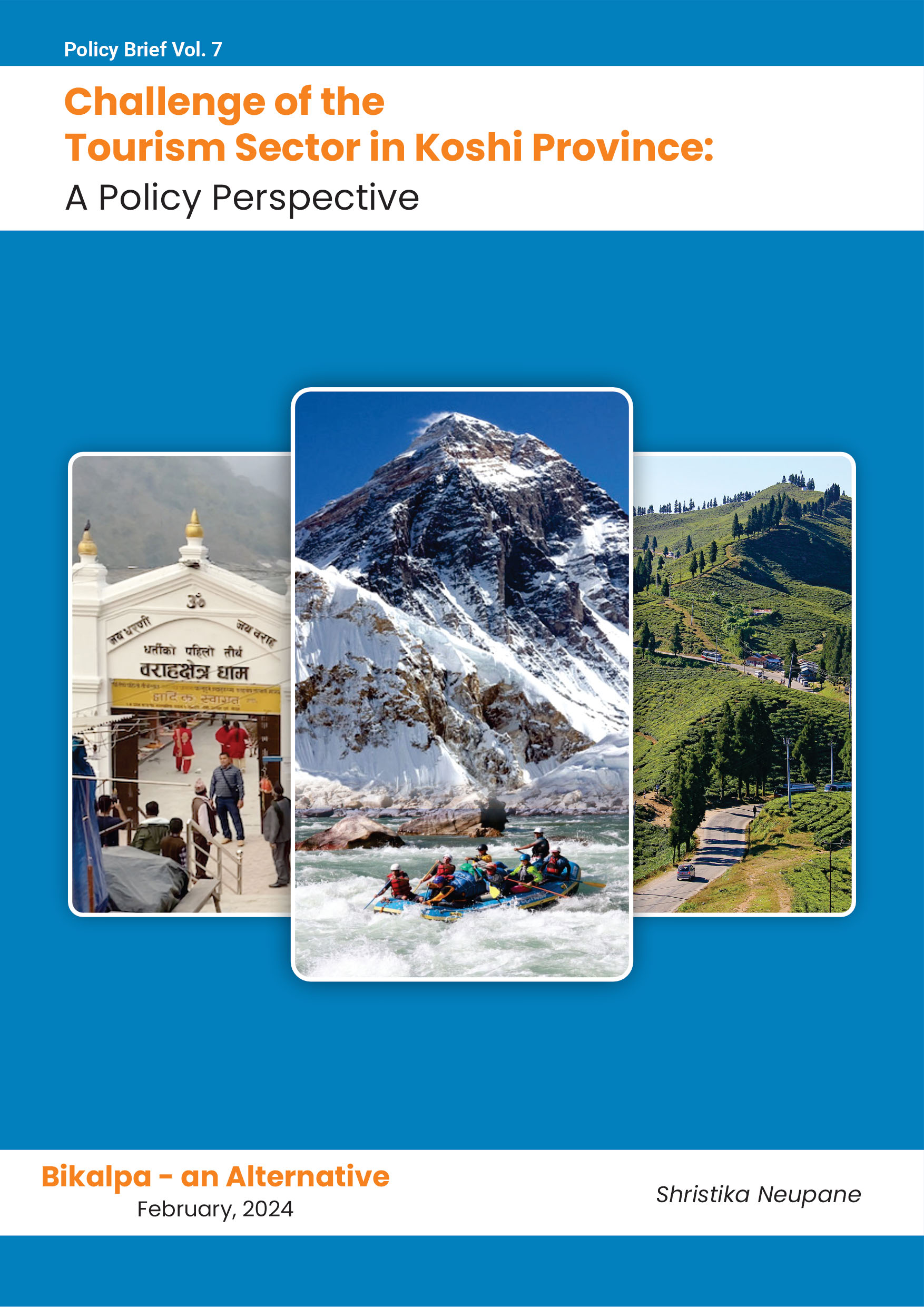Koshi province, Nepal can emerge as a viable tourism attraction. The study conducted by the Nepal Rastra Bank (NRB) in 2020 indicates that the province has the potential to emerge as the second-largest alternative source of foreign exchange, primarily through the growth of its tourism industry.
The province is endowed with abundant natural resources, including forests, rivers, lakes, and wildlife, making it a haven for nature lovers and adventure seekers. It is also rich in cultural heritage, with numerous religious and historical sites, temples, monasteries, and traditional arts and crafts that reflect the region’s rich history and cultural diversity. The region offers a range of tourism activities, including trekking, mountaineering, wildlife viewing, cultural tours, adventure sports, and homestays, providing a unique and authentic experience for tourists.
Potentialities
From the lowest land of Nepal, Kechana, to the roof of the world Mount Everest, the region has a wide array of attractions that appeal to all types of travelers. Individuals can revel in the breathtaking landscapes of Ilam and Dhankuta, while thrill-seekers can embark on treks to the basecamps of Makalu and Kanchenjunga. Koshi Province has the immense potential to emerge as a hub for adventure tourism, with adrenaline-pumping activities ranging from rafting and kayaking on the Tamor River to trekking along the Mundhum Trail.
Wildlife enthusiasts will find the province to be a delight as well. The Koshi Tappu Wildlife attracts birdwatchers from around the globe with its diversity of over 400 species of birds. It is also home to other animals like wild buffalo, Asian elephants, blue bull, rock python, etc. Moreover, Koshi Province has great cultural and religious significance which draws domestic and international tourists, especially from India, Bangladesh, and Bhutan. Some prominent religious destinations of Koshi Province are Pathibara, Haleshi, and Barahksherta, whereas there are also emerging sites like Pindeswar, Budasubba, and Dantakali.
In addition, the province is blending pot of various ethnic groups, with distinct traditions, languages, and festivals, offering rich cultural experiences. Homestays have become one of the popular approaches to introduce tourists to these experiences, by providing them with the day-to-day experiences of local people. Koshi province has 4 homestays belonging to different ethnic groups. They are Shreeantu Danda Community, Mangshebung Community Homestay, Namje Thumki Homestay, and Danda Bajar Community Homestay.
Koshi province shares a border with substantially populated Bihar and Bengal states of India. It can attract business conferences and events due to this strategic location. The presence of three medical colleges, eye hospitals, educational institutions, colleges, and universities can be utilized as medical tourism. Patients from neighboring states like Bihar, Bengal, and Uttar Pradesh travel to Biratnagar for eye treatment. On the other hand, the presence of universities, educational institutions, and various football and other sports tournaments in the Koshi Province highlights its immense potential to grow as a hub for education and sports tourism.
Constraints
Despite the immense potential in the tourism sector, the province has been facing several obstacles impeding the growth of the tourism industry.
One of the main barriers to tourism industry growth in Koshi province is the absence of a dedicated tourism board, and other related institutions and departments. This has led to a neglect of crucial responsibilities such as policy implementation, strategic planning, and promotion. Moreover, the frequent turnover of government officials in tourism-related departments disrupts continuity and hampers effective decision-making and project implementation. Likewise, Koshi Province Tourism Development Act 2076 fails to reflect the province’s distinctiveness and address multiple sector-specific concerns.
Despite its rich natural beauty and cultural heritage, Koshi province’s marketing and promotion strategies are very weak. There is an absence of a strong online presence and a clear Unique Brand Identity. The province has relied on traditional marketing strategies like conferences, brochures, and documentary production. The budget and programs of the preceding fiscal years have allocated a hefty sum for the production of digital and mobile apps. However, the lack of evidence about the launch of apps and digital advertising is extremely concerning.
Nepal’s Tourism Policy 2065 has directed to collect data on Indian tourists entering Nepal by land. There is a clear disregard for this mandate in the province. Indians are the primary target of the Koshi province tourism. Yet, there is the absence of data collection on their visits which has been hindering efforts to understand visitor behavior, market trends, and destination performance. There is also a lack of tourism packages for seamless tourist’s visits.
Additionally, the province fails to give priority to the programs aiming to draw high-value tourists. While increasing tourist numbers is undoubtedly a crucial metric, programs that focus on high-value tourists who make big financial contributions should also be prioritized. Traveler’s expenditures serve as the primary economic indicator for the tourism industry. Furthermore, despite undergoing thorough inspections at immigration points, Indian tourists entering the province via road with their vehicles often encounter repeated checks. This erodes the sense of hospitality and welcome that is vital for a positive tourist experience.
On top of that, the lack of incentives and business-friendly policies fails to stimulate innovation and attract investments in the sector. Also, the restrictions on operating hours limit the entrepreneur’s capacity to increase economic transactions.
Suggestions
Firstly, Koshi Province should focus on forming tourism board, and refrain from frequent turnover of tourism-related government officials. This is a dire need for policy and regulatory reforms tailored to the uniqueness of Koshi province, and its local need. It is vital to enhance coordination and cooperation among stakeholders through regular communication and the establishment of interconnected tourism territories can foster a cohesive approach. The systematic recording of the tourist data should also be prioritized.
Moreover, to tackle marketing challenges in Koshi province’s tourism sector it is imperative to enhance the digital presence, identifying Unique Selling Propositions, and Search Engine Optimization. Collaborating with influencers and bloggers to showcase the province’s attractions can also generate buzz and attract visitors.
To enhance tourist experiences, visitors entering the province via road should be thoroughly inspected at the border, and prevent unnecessary re-inspection. For example, following a careful inspection at the border, the province may apply tamper-proof stickers to the vehicles, indicating that they have already been examined. Furthermore, for seamless and hassle-free visits tourism packages should be introduced by government and private sector collaboration.
Private sector contribution through investments and innovation can’t be overlooked while talking about tourism prosperity. Hence, it is essential to support tourism entrepreneurs through streamlined regulations, implementing tax relief, innovation-friendly policies, extending operating hours, and promoting the night market.











